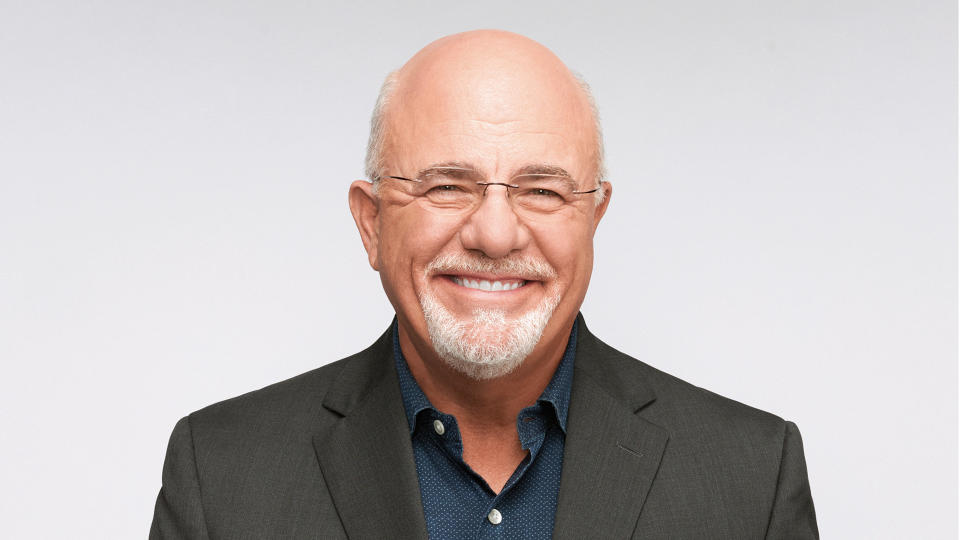Dave Ramsey: Why a Roth IRA Is a Great Option for Retirement and How To Open One

Although Roth IRAs might still feel like “the new kid on the block,” they’ve been around since 1997. Yet, many Americans still don’t really understand how they work, or why they might be a viable alternative to a traditional IRA.
Check Out: 7 Frugal Habits That Rarely Pay Off for Boomers in Retirement
Learn: 3 Ways To Recession-Proof Your Retirement
While a traditional IRA offers upfront tax advantages that a Roth IRA doesn’t, by the time you actually retire, you’ll likely be happier if you have a Roth, according to popular financial personality Dave Ramsey. Here are some of Ramsey’s thoughts on the benefits of using a Roth IRA, along with instructions on how to open one.
Account Grows Tax-Free
In all tax-advantaged retirement accounts, such as IRAs and 401(k) plans, your investments grow tax-deferred. You’re only taxed at the time you take money out of these accounts. But the Roth IRA goes one step further. Roth IRA account balances grow tax-free, not just tax-deferred. You won’t pay tax on any of your gains while they remain in the account, but you also won’t pay tax on your qualified distributions, which are generally those made after age 59 ½. This can be a huge benefit in terms of your retirement income, especially if you are in a high tax bracket.
$1 Million or $5,000 a Month in Retirement: Which Would You Choose?
No Required Minimum Distributions
As of 2023, if you have a 401(k) or IRA, you’ll have to begin taking money out of those accounts once you reach age 73. These mandatory withdrawals are referred to as required minimum distributions. The amount you must take out depends on your life expectancy, according to IRS tables, in any given year. But Roth IRAs don’t have any such requirement, at least not until the account owner’s death.
Choice of Investments
A Roth IRA is an individual retirement account, meaning it is set up by individuals. This is in contrast to employer-sponsored retirement plans, like a 401(k). As you are in control of your individual retirement account, you’re allowed to pick and choose the investments you want to put in it, subject to any restrictions put in place by your brokerage.
Catchup Contributions
Recognizing how important it is for older Americans to sock away money for retirement, the IRS allows catchup contributions in retirement plans once you reach age 50. This applies to Roth IRAs as well. While most workers are limited to Roth IRA contributions of $6,500 per year as of 2023, if you’re 50 or older, you can bump that up by $1,000 per year, to $7,500. This provision will allow you to save an additional $15,000 if you take advantage of it from age 50 to age 65.
Contributions Can Always Be Withdrawn
While this won’t get you any closer to your retirement goals, an interesting provision of Roth IRAs is that you can withdraw your contributions at any time without paying any taxes or penalties. As your contributions go into the account on an after-tax basis, meaning you’ve already paid tax on them, you are free to remove them from the account even before you reach retirement age.
This should be an option of last resort, as when you take money out of your Roth IRA you’re directly reducing your future nest egg. However, in the case of a serious emergency, it’s good to have an option to access some cash without it costing you in taxes and/or penalties. Bear in mind, however, that this applies to your contributions only. Any earnings in your account that you withdraw may be subject to taxes and/or penalties.
How To Open a Roth IRA
You can open a Roth IRA at most any brokerage or financial services firm. However, you need to have earned income in order to make contributions, as you can’t contribute any more than you make. There’s also an upper limit to how much you can earn and still make Roth IRA contributions. For 2023, that limit is $153,000 for singles and $228,000 for married couples filing jointly. However, the amount you can contribute starts phasing out at $138,000 and $218,000, respectively. The allowable 2023 income range for those who are married and filing separately is just $0 to $10,000.
Assuming you can make a Roth IRA contribution, simply contact your brokerage or financial services firm and indicate your intentions. As with any other type of investment account, you’ll have to provide basic information such as your name, date of birth, Social Security number and address, along with financial information like your bank account and routing numbers, your income and your employer.
Once your account is open, you can typically invest in a range of financial products like stocks, bonds, mutual funds and ETFs. To make sure you’re consistently saving, it’s usually a good idea to set up automated contributions to your Roth IRA throughout the year. If you’re looking to hit the maximum 2023 contribution of $6,500, for example, you’d have to set aside about $541.66 per month.
More From GOBankingRates
How Big Is the Average Social Security Check of a Middle-Class Retiree?
These 10 Cars Could Drain Your Savings Through Constant Repairs
This article originally appeared on GOBankingRates.com: Dave Ramsey: Why a Roth IRA Is a Great Option for Retirement and How To Open One

 Yahoo Finance
Yahoo Finance 